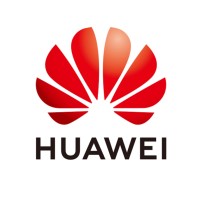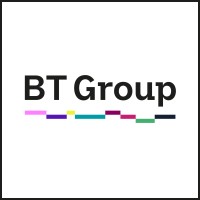Company Cyber Security Posture
NANA
NA Company Details
NA
NA
NA
NA
NA
NA
Scan still pending
NA
NA
Between 200 and 800
This score is AI-generated and less favored by cyber insurers, who prefer the TPRM score.
 NA Global Score
NA Global Score.png)

Company Scoring based on AI Models
| Model Name | Date | Description | Current Score Difference | Score |
|---|---|---|---|---|
| AVERAGE-Industry | 03-12-2025 | This score represents the average cybersecurity rating of companies already scanned within the same industry. It provides a benchmark to compare an individual company's security posture against its industry peers. | N/A | Between 200 and 800 |
Company Cyber Security News & History
| Entity | Type | Severity | Impact | Seen | Url ID | Details | View |
|---|
Company Subsidiaries

NA
Access Data Using Our API

Get company history
.png)
NA Cyber Security News
Cisco’s 2025 cybersecurity readiness index is a wake-up call
The annual survey reveals that only 7% of organisations in India have achieved a mature level of cybersecurity readiness, up from 4% last year.
ESET Joins Hands with Rashi Peripherals to Boost Cybersecurity in India
ESET, a global leader in cybersecurity, has partnered with Rashi Peripherals Limited to expand its presence in India.
BSNL Suffered Data Breach That Compromised 278 GB of Data
The data breach by threat actor kiberphant0m (who priced it at USD 5000) was first flagged by digital risk management firm Athenian Technology.
Crowdstrike's update on Microsoft outage: 'Issue found, fix deployed'
Microsoft outage: Crowdstrike clarified that the outage was not caused by a cyberattack but due a defect in an update, which has been ...
All rules on new telecom law to be notified in 180 days: minister Scindia
The telecom department will also set up a performance management unit (PMU) comprising Bharat Sanchar Nigam Ltd (BSNL), C-DoT, Tejas Networks ...
Working towards launching 4G/5G services on BSNL/MTNL 'at the earliest': Scindia
NEW DELHI: Promising to launch 4G and 5G services in BSNL and MTNL “at the earliest”, communications minister Jyotiraditya Scindia on Thursday ...
BSNL, MTNL bet on indigenous 4G-5G technology
Once the undisputed voice of Indian telephony, Bharat Sanchar Nigam Ltd and its Delhi- and Mumbai-focused cousin Mahanagar Telephone Nigam ...
AIIMS steps up security against cyber threats
The apex medical institute has now decided to separate its networks for hospital services. The intranet facility is now completely dedicated to running e- ...
Modi Government’s Move To Stop China’s Huawei From India’s 5G Trials Is A Huge Win
The Narendra Modi government deserves credit for this call on Huawei. It will go a long way in curbing the cyberthreat from China, improving the ...

NA Similar Companies

e& UAE
(Formerly etisalat UAE) For more than four decades, we have connected people and now we’ve evolved to become the digital telco of the future. Our mission is to grow, transform and excel as the region’s technology leader while enhancing digital customer experience and operation agility. e& UAE

Openreach
We’re the people that make the net work. As the nation’s largest wholesale broadband network, we’re rolling out Ultrafast Full Fibre broadband across the UK. It’s our fastest and most reliable broadband yet, and we’re well on our way to making it available to 25m homes and businesses – building the

TIM Brasil
A TIM é a empresa de telefonia móvel que mais cresce no Brasil. Atualmente, possui mais de 13 mil colaboradores em todo o país que trabalham entregando serviços inovadores e de qualidade em telefonia móvel, fixa e internet banda larga. É uma companhia feita de pessoas criativas, com energia real

Huawei
Huawei is a leading global provider of information and communications technology (ICT) infrastructure and smart devices. With integrated solutions across four key domains – telecom networks, IT, smart devices, and cloud services – we are committed to bringing digital to every person, home and organi

BT Group
We’re one of the world’s leading communications services companies. At BT Group, the solutions we sell are integral to modern life. Our purpose is as simple as it is ambitious: we connect for good. There are no limits to what people can do when they connect. And as technology changes our world, co

Bouygues Telecom
🤝Ce qui fait notre singularité ? Chez Bouygues Telecom, nous croyons que les relations humaines sont un besoin vital. La qualité de nos relations avec notre famille, nos amis, ceux qui nous entourent est déterminante pour notre bien-être, notre santé et même notre espérance de vie. Ce sont ces rela

Frequently Asked Questions
Explore insights on cybersecurity incidents, risk posture, and Rankiteo's assessments.
NA CyberSecurity History Information
How many cyber incidents has NA faced?
Total Incidents: According to Rankiteo, NA has faced 0 incidents in the past.
What types of cybersecurity incidents have occurred at NA?
Incident Types: The types of cybersecurity incidents that have occurred include .
Additional Questions
What Do We Measure?
















Every week, Rankiteo analyzes billions of signals to give organizations a sharper, faster view of emerging risks. With deeper, more actionable intelligence at their fingertips, security teams can outpace threat actors, respond instantly to Zero-Day attacks, and dramatically shrink their risk exposure window.
These are some of the factors we use to calculate the overall score:
Identify exposed access points, detect misconfigured SSL certificates, and uncover vulnerabilities across the network infrastructure.
Gain visibility into the software components used within an organization to detect vulnerabilities, manage risk, and ensure supply chain security.
Monitor and manage all IT assets and their configurations to ensure accurate, real-time visibility across the company's technology environment.
Leverage real-time insights on active threats, malware campaigns, and emerging vulnerabilities to proactively defend against evolving cyberattacks.




